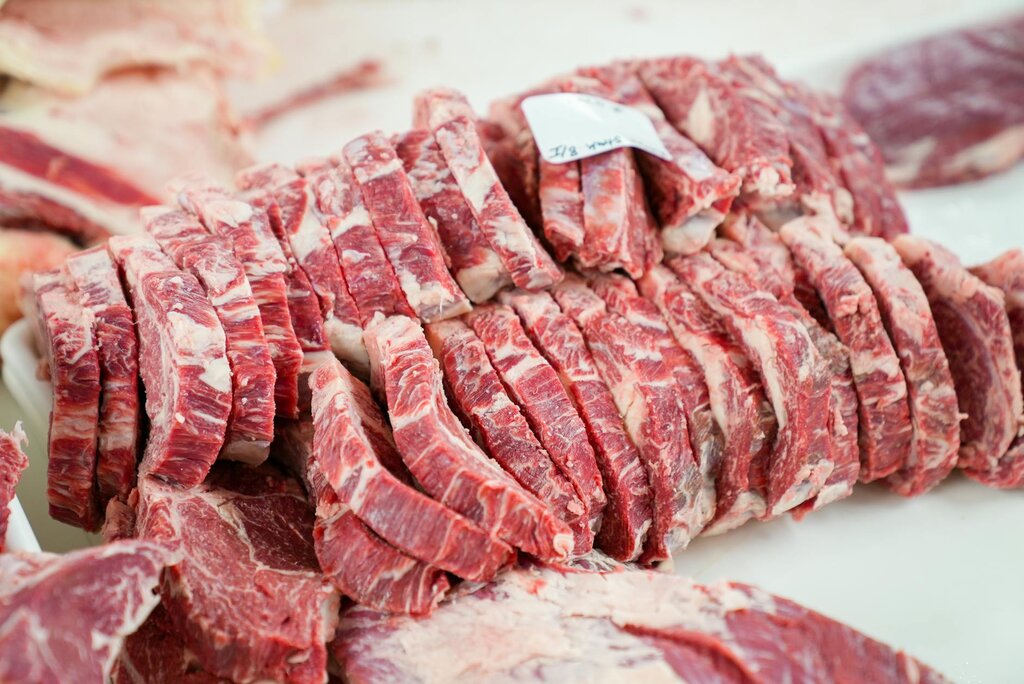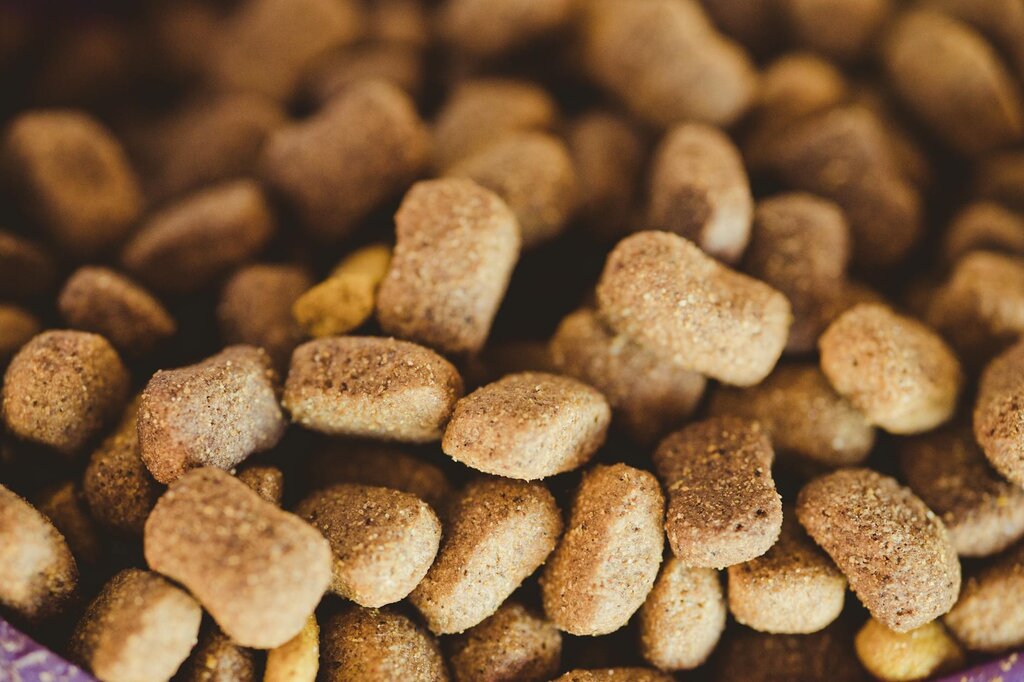Last Updated: 10/06/2025
Best Dog Food in Australia
Find out the best picks of Dog food in Australia from our team of Vets.
Author: Dr Carla Paszkowski BVSc (Hons)
Reading Time: 36 minutes - long read
In the realm of pet care, few decisions are as critical and impactful as choosing the right food for our furry companions. As devoted pet owners, we want to provide our dogs with the nutrition they need to thrive and enjoy a life of vitality and well-being. However, with so many different types of pet food available these days, determining what truly constitutes the best dog food can be an overwhelming task.
From premium kibble to grain-free options, from natural to novel recipes, the spectrum of possibilities seems boundless. But the truth is, not all pet foods are created equal. What truly sets apart the best vet recommended dog food from the rest? What factors should conscientious pet owners consider when making this crucial decision?
Whether you're a seasoned pet parent seeking to optimize your dog's diet or a newcomer navigating the realm of pet nutrition for the first time, this article is designed to equip you with the knowledge and confidence to make informed choices for your canine companion.
How we assess dog food
There are several factors which go into assessing the quality and suitability of a food for an individual dog. Primarily, the most important consideration is that the diet is complete and balanced for a dog's stage of life. Ensuring that it meets AAFCO or FEDIAF pet food control guidelines is crucial to ensure that dogs receive all the nutrients they require in the correct ratios.
Then, the quality of the ingredients and the digestibility of the nutrients they provide is the next consideration. High-quality sources of protein, carbohydrates, fats, vitamins, and minerals are preferred, with specific attention to meat or meat meals as primary protein sources. Learning how to read pet food labels and knowing the ingredients in your dog's food is a crucial part of knowing what is the best food for them.
Our Vets also consider the food's manufacturing process and whether it adheres to quality and safety standards to prevent contamination or degradation of nutrients, and ethical, sustainable and humane methods of ingredient sourcing.
In addition, our Veterinarians often rely on their clinical experience to evaluate how different dog foods impact dogs' health and well-being. Observing how dogs respond to specific diets in terms of coat quality, energy levels, and gastrointestinal health is informative.
What to look for in a dog food
- Animal protein content: more meat, fewer 'fillers'
- Optimal nutrients, and thorough testing
- Specific ingredient names
- Free from artificial nasties
- Place of manufacture: is it locally made?
1 - Animal protein content

While it's not a sweeping rule, generally pet food that is higher in animal protein (as opposed to cheaper plant-based protein) is considered more digestible for our furry friends, and better quality overall.
How can you tell if your pet food is high in meat?
In the pet food industry, all ingredients are required to be listed on the label in order of weight. This means that the ingredients listed first make up the largest proportion of the recipe.
Why meat is important
The truth is, modern dogs are actually omnivores. Fifteen thousand years spent living alongside humans has resulted in the development of a highly adaptive canine metabolism, and the evolution of three new genes related to starch and glucose digestion. Domestic even dogs produce carbohydrate-digesting enzymes in their digestive tract which other carnivores, such as cats, do not.
Plant-based ingredients are in fact an important part of a dog's diet as they contribute fibre, as well as important vitamins and minerals that dogs need for longevity. Read more here about the benefits of grains in dog food.
However, while dogs can digest grains and plant-based proteins, they are still best suited to a diet high in meat and animal protein.
This means, when looking at ingredients, it's generally best to look for foods that list meat or animal proteins as the first ingredient, if not the first few ingredients.
An easy rule to use is that if the food contains two out of the first three ingredients as whole-meat sources, it's a winner. However, note that some cheap pet food brands tend to 'split' their carbohydrate ingredients to make them seem like a smaller portion. An example of this is by listing 'wheat' as a second ingredient, and then 'wheat bran' lower down the list. This avoids having to list 'wheat' as the first ingredient and therefore makes another ingredient, such as meat, seem more prominent.
2 - Balanced nutrients, thorough testing

Nutrients are not the same as ingredients
An ingredient is something like 'chicken' or 'wheat', whereas a nutrient is a measurable element such as 'protein' or 'Vitamin C'. Every individual ingredient contains all nutrients in varying amounts. It might help to think of nutrients as the 'building blocks' of ingredients. Nutrients include carbohydrates, proteins, fats, minerals, vitamins, fibre, and water.
Why is this important to know? Well, it's all well and good to have a beautiful selection of nice-sounding ingredients, but if the nutrients are all out of whack, your dog won't get everything they need.
International guidelines are set out for pet food manufacturers which detail minimum levels of nutrients required for each life stage. The most widely used guidelines are those set out by AAFCO (Association of American Feed Control Officials). However, it's important to note that these are guidelines only, and usually only detail 'minimum' requirements. If a food contains too much of a nutrient, it may still qualify as 'meeting standards', but may in fact provide your dog with too much of a nutrient (and in the case of some nutrients, this can potentially do damage over time).
Many of the higher-end premium pet food brands conduct laboratory analyses and studies to determine the optimum levels of nutrients in their food, as well as regular batch testing to ensure consistency. (So, it's not just the high quality food you pay a little more for - it's the extra attention to safety standards too!)
3 - Consistent recipes
Another way to judge whether a pet food is of a high quality is by determining whether the recipe is consistent and specific, or 'open' and likely to change between batches.
What is an open recipe?
As a method of cost-cutting, many cheaper pet food brands opportunistically source ingredients based on availability at the time. Perhaps there are more chicken carcasses available from the human chain this month? Poultry it is! Next month there'll be a lot produced by the pork industry, so it'll be pork by products next month!
On the other hand, high quality pet foods always stick to the same recipe, using the same quantity of each ingredient every time. This makes for an honest recipe with no surprises, and is particularly important for dogs with food allergies.
Common examples of vague terms found in ingredient lists include 'meat and their by-products', 'cereals and their by-products', 'vegetables', and that ever confusing term 'and/or'. If you see these words in an ingredient list, you can almost guarantee their recipe is ambiguous and may change opportunistically batch by batch.
To compare, ingredients from a high quality pet food tend to name the specific meat, grain or vegetable. You will see words like 'lamb', 'barley', or 'sweet potato', rather than 'meat', 'cereal' or 'vegetable'.
What is meat meal?
Many people cringe at the term 'meat meal', as they assume it is similar to a 'byproduct'. However, the word 'meal' is not anything to bawk at - it basically means 'dehydrated meat', and it just implies that the meat protein could be derived from other parts of the animal. However, do keep in mind that 'beef meal' is more specific than 'meat meal', likewise 'chicken meal' compared to 'poultry meal'. (Remember what we said about specific names before?)
Ultimately, if your pet has no food allergies, 'open' recipes won't do them any harm. But the consistency of a recipe is an easy way to determine the integrity and quality of a pet food overall.
Top tailored scientific dog food brands
Hill's Science Diet
Key features
- Nutritionally complete and balanced recipes for dogs of all lifestages and breed sizes
- Targeted, scientifically proven nutrition to help manage health needs including mobility, sensitive skin, digestive problems and weight control
ADVANCE
Key features
- Complete and balanced formulas tailored to suit dogs of every lifestage and size
- Selected specialised formulas for breed groups including 'Oodles', Retrievers and Terriers
- Made locally in Australia
Royal Canin
Key features
- Premium quality complete and balanced dog foods tailored to the needs of all breed sizes and lifestages
- Breed specific formulas which include specialised kibble shapes and textures.
- Health nutrition formulas for dogs requiring support for joint, skin, digestive and dental health
4 - Free from artificial nasties

Most people prefer to avoid artificial 'nasties' in their own food, and it's no different for our furry friends. While many additives may be harmless, some can cause deleterious effects over time. And with so many natural alternatives, artificial additives are simply unecessary nowadays.
Some cheaper pet foods still add artificial colours to their food. We're sorry to say it, but this truly is unnecessary - rest assured, your dog doesn't mind what colour their food is. Artificial colours are only added to appease pet owners.
Likewise, some cheaper pet food companies also add sweeteners such as corn syrup, sucrose, or ammoniated glycyrrhizin to cheaply increase the calorie content, or to improve the taste (because even cardboard tastes good if you cover it in syrup!). This can lead to weight gain and nutrient imbalances.
What about preservatives? Artificial preservatives to steer clear of include ethoxyquin, BHA, or BHT. Instead, look for a recipe that uses natural preservatives, such as tocopherols (such as Vitamin E), vitamin C, and rosemary extract. However, note that because they are natural, of course they don't work for quite as long as artificial preservatives, so always check the expiry date!
Top natural dog foods
5 - Place of manufacture
While this shouldn't be used as a black-and-white rule when judging the quality of a pet food, it can be useful to check the place of manufacture. Buying locally can have major benefits both for you and your pup.
Why choose Australian made?
When it comes to the safety of the food we feed our pets, one can never be too careful. Many dog owners find it comforting to know they're buying food from trusted, 'first world' Australian facilities (with nationally controlled manufacturing factories, quality assurance, and OH+S standards).
There is also a financial benefit: buying locally avoids uneccesary unnecessary import costs and means the food likely has a longer shelf life when you bring it home. This all adds up to a better good quality pet food for a much fairer price. Plus, buying locally produced pet food ultimately helps support our economy!
Top Australian made dog food brands
Navigating the realm of dog food choices can be daunting, with an abundance of options and conflicting opinions. All in all, selecting a food for your pet is a personal choice. If you can equip yourself with a keen eye and the ability to read a label, you can help take the guesswork out of which pet food is best for your pet.
We've discussed some key factors that can help guide your decision. Considerations such as high meat content, tailored and scientifically formulated recipes, the use of natural ingredients, and Australian manufacturing can all contribute to identifying top-quality dog foods.
Ultimately, whether you opt for premium brands known for their rigorous testing and quality assurance or select options tailored to your dog's breed-specific needs, the key lies in prioritizing good nutrition. With careful consideration and a commitment to providing the best possible diet, you can ensure that your canine companion enjoys a life filled with vitality and tail-wagging joy.
Further Reading
History
Our experts continually monitor the health and wellness space and we update our articles when new information becomes available.
Mon Mar 3 2025
Edited by Dr Teagan Lever BVSc (Hons)Dr Carla Paszkowski BVSc (Hons)
Veterinarian
Dr. Carla graduated from the University of Queensland in 2013 with a Bachelor of Veterinary Science and worked for a number of years in small animal clinics across South East Queensland. While Carla enjoys most facets of clinical veterinary work, she holds a special passion for feline medicine, pocket pets, and nutrition.

